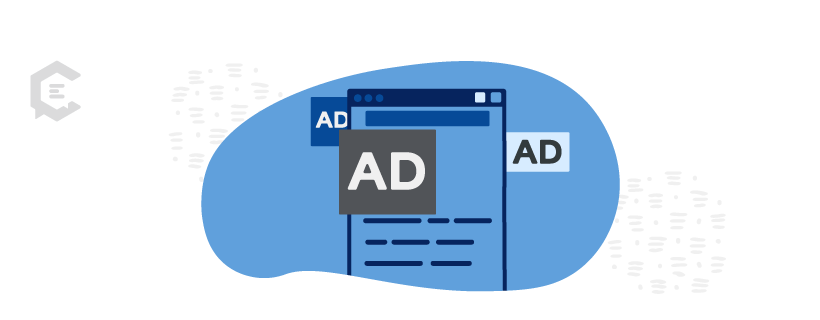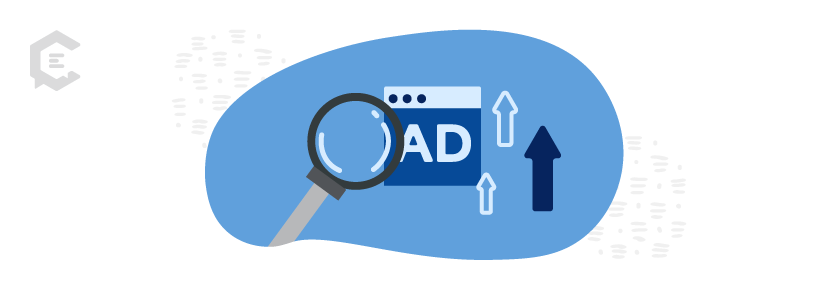Popular bloggers, YouTubers, and podcasters are all becoming extremely powerful influencers with massive followings that can feel beyond overwhelming. This points to how important influencer marketing has become — and the growing importance of paid media strategies such as sponsored content.
While sponsored content has existed for decades, this type of marketing is thriving everywhere today on blogs, online video channels, and social media platforms. Because sponsored content articles and other media can be published on popular websites and promoted by trusted influencers, it offers a great way to get your brand in front of your target audience by using influencer connections.
In this article, we’ll take a closer look at what sponsored content advertising is, the value of sponsored content, and how it differs from native advertising and branded content. We’ll also examine good examples of sponsored content and determine why it works.

What is Sponsored Content Advertising?
Sponsored content, also called sponsored editorial content, includes any type of promotional media, from online articles to videos, that are paid for (or sponsored) by an advertiser but created by a different brand, influencer, or publisher. These partner organizations or influencers then share content that mentions your brand with their audience, increasing your brand recognition.
In contrast to branded content, which can be produced in-house by an advertiser, sponsored content is always produced by an outside publisher. Sponsored content is also different from native advertising campaigns, which use paid ads that match the form and feel of whatever media format the ads are placed in. This encourages people to click on native ads and be taken to your brand’s website or a piece of sponsored content that promotes your brand.
What Are the Benefits of Sponsored Content?
So, what is the value of sponsored content? Well, in today’s world, people don’t want to consume traditional commercials or advertisements. They instinctively recoil at banner ads and anything that tries to “sell them something” in an obvious way. Instead, they want to feel they’re getting something of value when they engage with online content.
Sponsored content offers a way to offer that value. If the influencers, companies, and websites you partner with already have a loyal following with your target audience, that means they have a reputation for providing the useful, valuable content your core audience wants to consume.
For instance, a personal finance company might partner with a well-known financial blogger to create a detailed article about effective retirement planning strategies. The blogger’s audience trusts their expertise, so they are more likely to engage with the sponsored content that subtly promotes the company’s retirement planning tools.
An investment firm could team up with a popular financial podcast to produce an episode on the latest trends in sustainable investing. The podcast host could discuss the benefits and potential of various strategies while integrating mentions of the firm’s services and expertise. The listeners who are interested in financial growth and sustainability are likely to engage with the content and consider the firm’s investment options.
When you pay an influencer to create a piece of content that mentions your brand, they’re still providing useful, valuable content to an audience that’s willing to listen to them. And since they’ve built a lot of trust with their audience, their followers will be more willing to engage with your brand.
Then there’s the benefit of having sponsored content exist on an influencer’s site instead of your own. Offering multiple mentions of your brand on popular websites and social media channels increases your online presence, making it easier to promote your business.
Sending elements of your brand kit to partners is crucial to maintaining brand consistency in sponsored content — think color schemes and fonts for infographics and tag lines for video or social posts. You can easily set up a brand kit through tools like HubSpot’s Brand Kit Generator, Looka, and others.
Examples of Sponsored Content
Okay, so what types of sponsored content articles and other paid media are most effective at promoting your brand? Here are five of the best sponsored content examples.
Sponsored articles
Sponsored articles are one of the most common types of sponsored content and have been used in both online and print publications.
You can pay for many types of sponsored articles or blog posts, including listicles, short-form content (usually less than 1,000 words), and long-form content (in-depth articles that run from 1,000 to 7,500 words).
One great example of a sponsored article is the BuzzFeed listicle 15 Bands That Probably Wouldn’t Exist Without Led Zepplin. This listicle was sponsored by the music streaming service Spotify and features quick profiles of popular bands like Kings of Leon and Radiohead that BuzzFeed’s audience appreciates. Simultaneously, the article offers links to each band’s Spotify profile, allowing the sponsored article to promote Spotify while still offering valuable content to music lovers.
Sponsored video content
Many consumers love watching fun online videos, making sponsored video content effective at brand promotion. Several YouTube content creators, for instance, receive sponsorships from companies like HelloFresh and mention their products and services prior to showing the main content on their videos.
The food-and-travel video network Tastemade offers numerous recipe videos sponsored by Michelob ULTRA beer. In the videos, including one that shows how to make chicken and rice stuffed shells, the recipe encourages people to enjoy the dish with “a refreshing Michelob ULTRA.” Thus, Michelob gets a natural product plug in a piece of sponsored content that entices food and drink enthusiasts.
Sponsored podcast content
Podcasts have gained renewed popularity online and reach a variety of audiences, including entrepreneurs, health enthusiasts, movie lovers, and more. As such, they provide an excellent way to reach your core audience through sponsored content.
Podcasting publisher Gimlet Media, for example, offers the podcast show “Chompers” on Amazon Echo, which encourages children to brush their teeth through fun riddles, stories, and trivia games. This makes it perfect for producing content for its sponsors Oral B and Crest.
Sponsored influencer content
Successful online influencers have amassed huge followings on social media, making social media channels like Instagram a great place to engage in sponsored content.
This marketing tactic works well with celebrities who influence their followers’ fashion and lifestyle choices through their social media posts. Singer and actress Selena Gomez, for example, has over 200 million followers on her Instagram and regularly posts images of herself wearing different outfits.
Thus, it made sense for the high-fashion company Coach to have Gomez produce a sponsored post where she wore one of Coach’s outfits and shared the photo with millions of her followers. Since her fans enjoy seeing Gomez model different fashions, having her wear Coach fashions aligns with her brand and Coach’s needs.
Sponsored infographics
Infographics offer a way to quickly convey information through a visual medium. This makes them an excellent device to help educate the public in today’s online age.
GOOD Worldwide Inc. is a U.S.-based company that produces a website, online videos, and additional content that covers environmental issues, education, urban planning, politics, culture, health, technology, and design.
This made GOOD an excellent fit for UPS to sponsor an infographic showing how UPS transports a package across vast distances. UPS gains more recognition for its work and GOOD produces a piece of content its readers appreciate.
Increasing Your Brand Recognition with Sponsored Content
Ultimately, sponsored content offers benefits not only for the sponsors but also for the influencers who produce and publish the content. Unlike traditional advertising, it focuses on offering useful, informative content that fulfills the needs of the audience. Any products or services being promoted tie into those needs, creating a more favorable response to the brand and content creators.
That being said, it’s important for you to first determine what type of sponsored content your base responds to best. Online articles, videos, social media posts, podcasts, and infographics all appeal to different demographics, and it’s to your advantage to know what type of content your customers seek.
One good way to approach this is to learn if a content creator has a following that matches your target audience. Not only will this help you reach out to your desired demographic, but it also ensures your brand meshes with the content being produced. This results in a more organic piece of sponsored content that appeals to the content creator’s audience and drives more business toward your brand.
If any of these sounds time-consuming or challenging, partnering with vetted content professionals can be the way to go. That’s where we come in. Start a conversation with us today to see how we can elevate your sponsored content plans.






